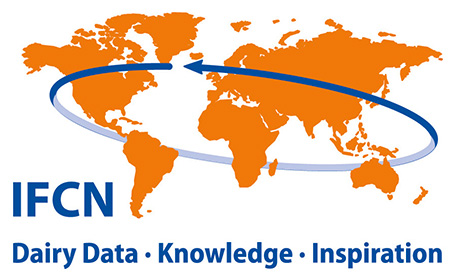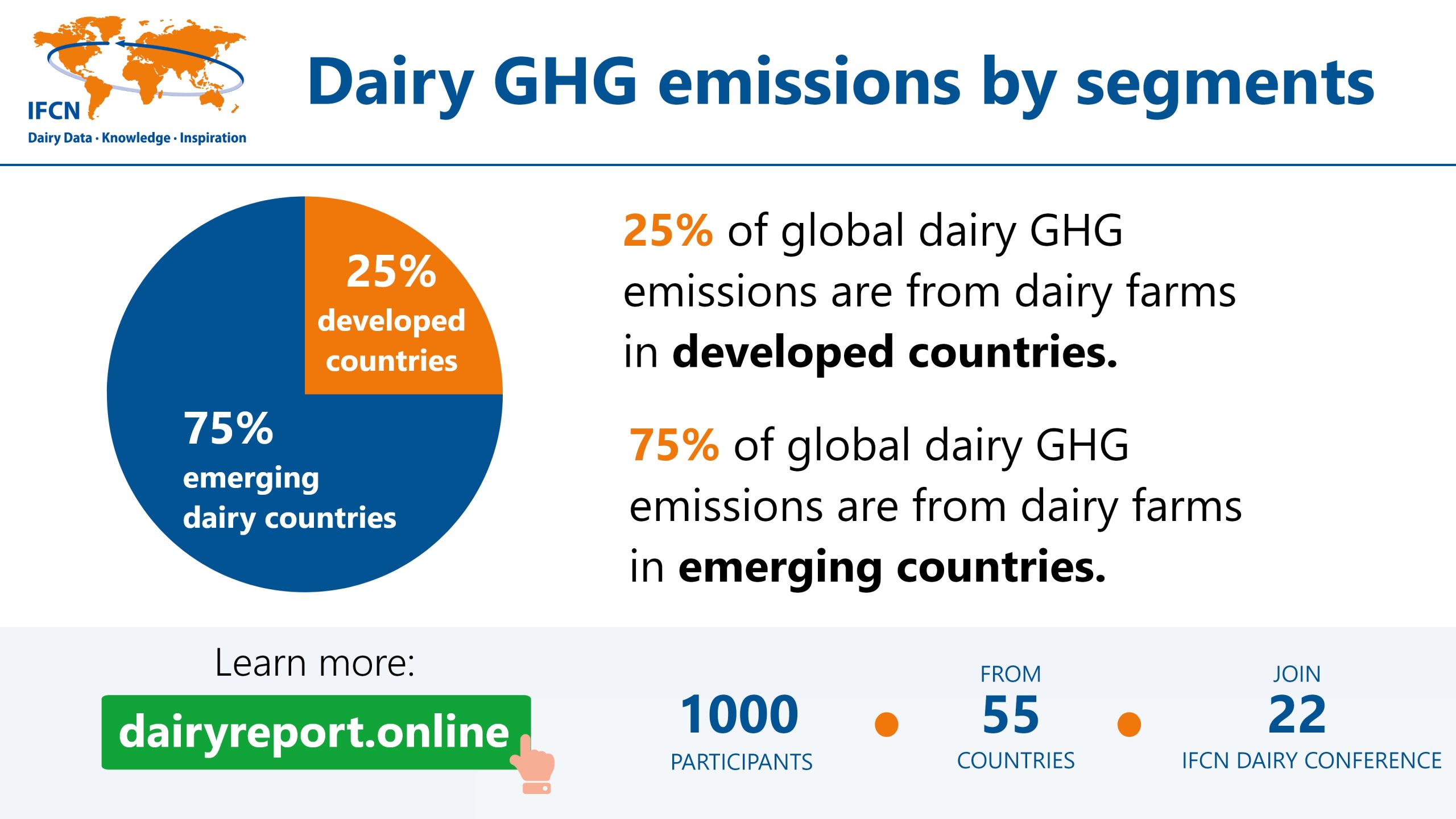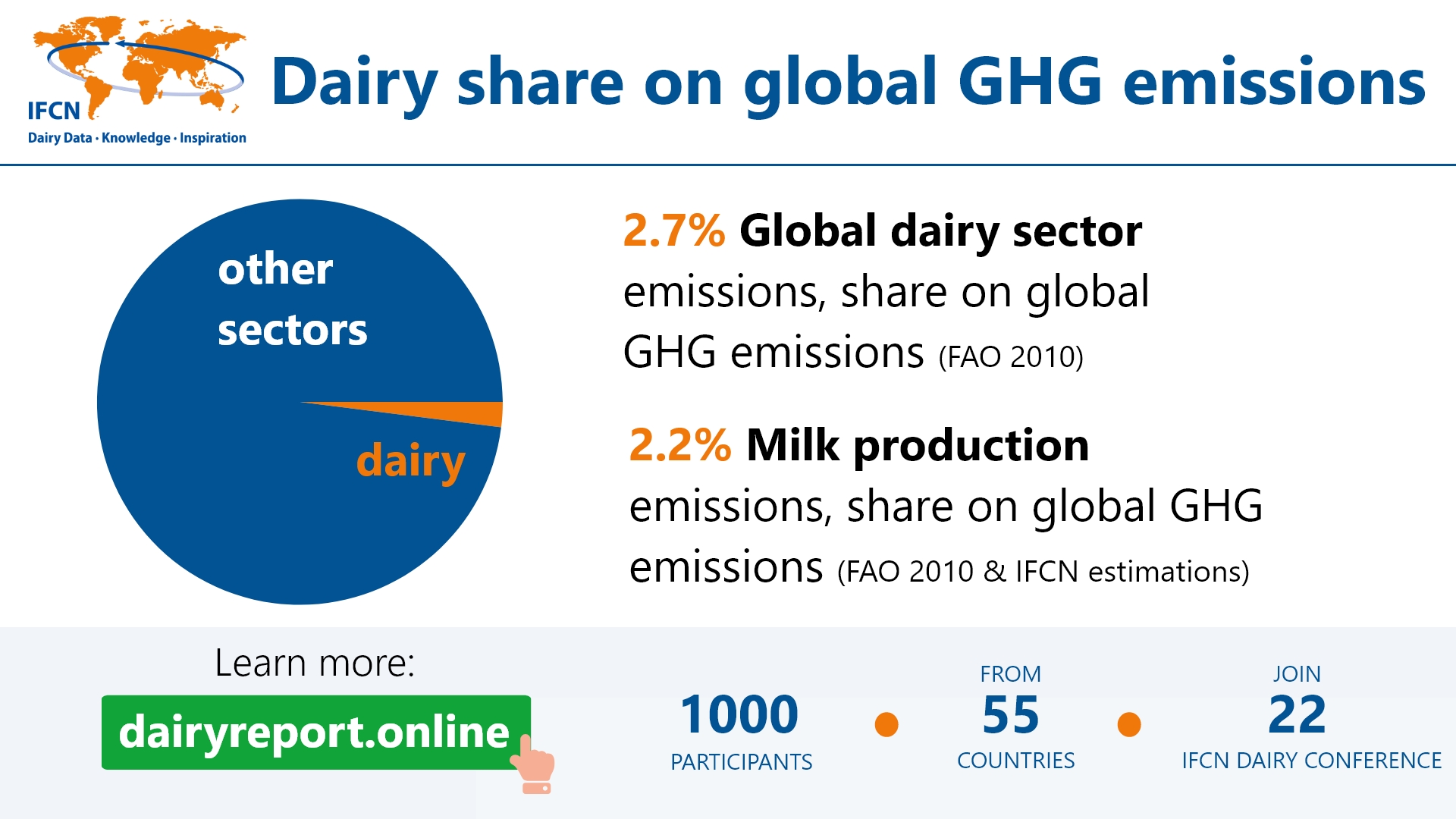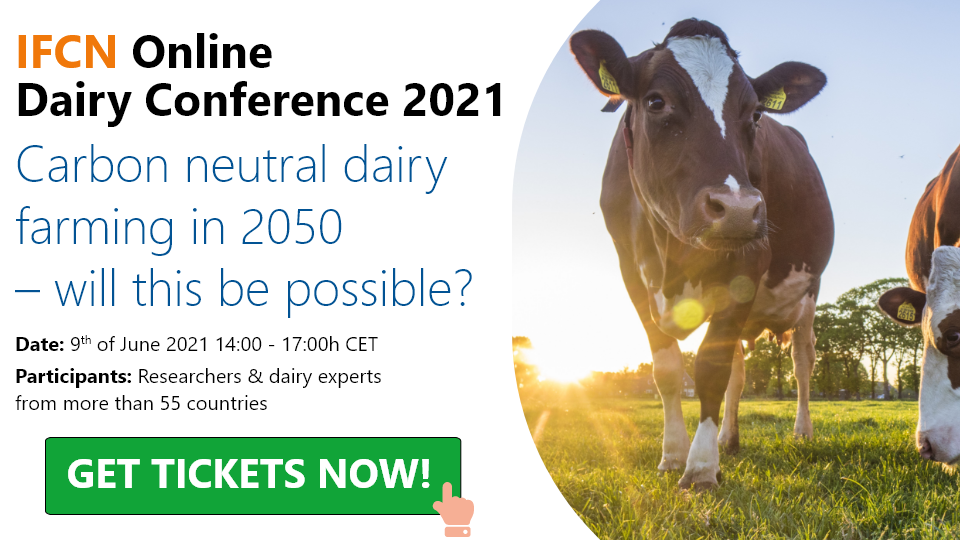“Carbon neutral dairy farming in 2050 – will this be possible?”
This is what we asked you two weeks ago – and 79% believe that it could be possible! Thank you for your participation & your optimism.
Climate change is one of the greatest challenges of our time. Scientists agree it’s being driven by the increase in CO2 and other greenhouse gases in the atmosphere and today CO2 in the air is at its highest level in 650.000 years!
To combat climate change, more and more governments and companies have committed to becoming climate-neutral by 2050. Based on this development, it becomes clear that every sector of our economy is well advised to review its CO2 emissions and analyse how it can contribute to climate neutrality by 2050.
Did you know?
75% Share of emerging dairy countries emissions on global milk production related greenhouse gas emissions (GHG).
IFCN has generated a simple proxy of milk production related GHG emissions for each country worldwide. This approach is based on the LCA cradle to farm gate approach in the IFCN model TIPICAL. This has been used to benchmark over 150 dairy farming systems in 52 countries. This analysis has led to a regression function on milk yield and carbon emission per kg milk with an Rsq. of 0,77.
75% of all milk production related emissions. The emissions in developed countries (countries in North America, Europe, Oceania, Japan, Israel e.g.) count for only 25% of the global GHG emission from milk production. Even though developed countries produce more than 25% of world milk the GHG emission/ kg milk are most likely 50% lower than in emerging dairy countries.
Sources: IFCN database status 3/2021, TIPI-CAL LCA model applied in 52 countries and estimation.
Country classification following UNSTATS: Simplified – Developed countries: Countries in Europe, North America, Oceania, Japan, Israel, etc.
Emerging dairy countries = developing countries like all countries in Africa, Latin America and Asia excluding Japan, Israel, etc.
Did you know?
2.2% – that’s the milk production share on all global greenhouse gas emissions (GHG).
GHG: Green house gas emissions by CO2, CH4, NO2.
Sources: FAO,2010; IFCN emission estimations on milk production form total dairy emissions; 0.3 share on global emission for dairy processing and transport.
The number 2.2% represents the share of greenhouse gas emissions from milk production. (Based on a FAO publication from 2010 estimating the dairy sector GHG emission) – less than the usually anticipated 18%.
Agriculture & especially livestock farming emerge in the public debate as major drivers of carbon emissions. Therefore, IFCN, as a global network of dairy researchers, institutions and companies addresses this topic at its Dairy Conference 2021. Asking the right and challenging questions can be crucial to making the progress we need: “CO2-neutral dairy farming in 2050 – will this be possible?” So far more than 1000 people have registered from over 55 countries.
We look forward to meeting you on June 9th!
For our partners, registration is free of charge. Not a partner yet? Then you can register here:



